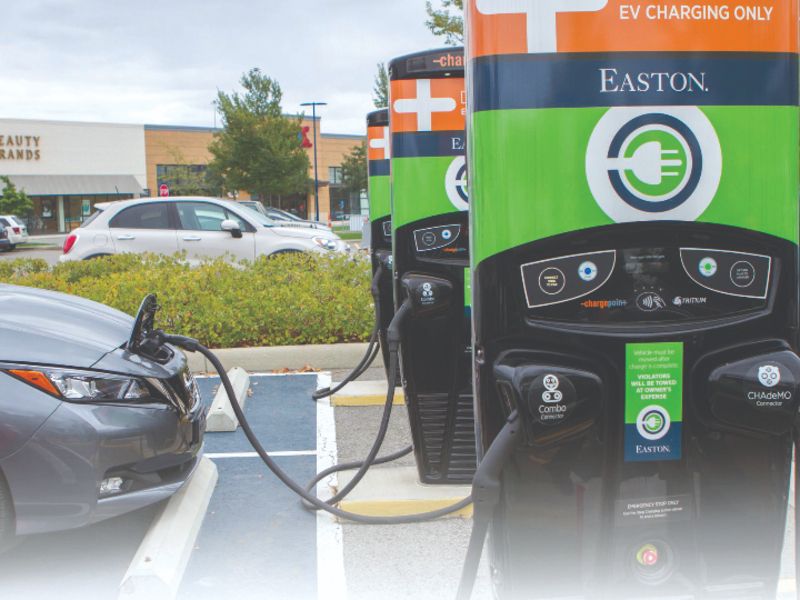
Building out enough charging infrastructure to meet the expected increase in electric vehicles takes a village.
One key part of that village? Cities.
Cities and municipality-affiliated utilities across the U.S. play a role in complementing infrastructure progress made at the state and regional level, one project site at a time.
While federal, state and regional programs often have access to greater sources of funding, certain city-specific charging problems require city-centered solutions, said Jacob Orenberg, capital projects coordinator at Seattle City Light, a public utility company in Washington.
“There are some barriers to electrification that really only the city can address,” Orenberg said.
Seattle presents one particularly unique example. “A lot of our neighborhoods and districts were built before, say, 1950,” he said. “As a result, even a lot of the single-family homes here don’t actually have driveways or garages. They have nowhere to park their car off street, nowhere to install their own electric vehicle charging infrastructure.
“The city essentially needs to provide solutions for that — or at least part of the solution.”
Seattle City Light, owned by the city, has installed 16 fast chargers at six locations since 2018. It plans to install 10 more fast chargers at five more locations by the end of the year, for a total of 26 chargers that are part of a pilot project sparked by the Drive Clean Seattle mayoral initiative.
“We’re trying to fill in the gap,” Orenberg said. “We’re trying to invest and place our chargers in areas where the private sector is not investing in. Initially, we were looking for stations that were very accessible, that were easy to get to, near major roads or highways, near retail or basically anything where somebody would have something to do while they’re charging their vehicle for 20, 30, 60 minutes.”
Now, the utility is giving the public more input in the site selection and installation process.
“The No. 1 gauge for success, of course, is utilization,” Orenberg said. “The charging stations that are being used more — there’s something right about that. There’s something about that station that the people like.”
Two thousand miles to the east, Jordan Davis is overseeing another major EV infrastructure push as executive director of Smart Columbus, a regional mobility initiative based in Ohio’s capital city.
“There’s a handful of nuanced dimensions that bring complexity to this whole charging equation,” Davis told Automotive News.
“Cities have a tremendous role to play in not just having an overarching understanding of where charging is today and where it’s needed based off the growth expectancy and future developments,” she said, “but also as we think about the market growing: Where do we need more public charging and available charging for this shift that’s inevitably going to occur?”
Over the past three years, Smart Columbus has installed more than 900 charging stations in partnership with public utility company AEP Ohio. The Level 2 AC chargers and DC fast chargers have been installed at workplaces, residential buildings and public spaces.
In California, San Jose Clean Energy is one of the local public electric utilities that partnered with the California Energy Commission to fund the California Electric Vehicle Infrastructure Project in Silicon Valley.
The city electricity supplier contributed $4 million, coupled with $10 million from the energy commission, for the installation of 1,400 Level 2 chargers and 100 DC fast chargers in San Jose. The Level 2 chargers are expected to be in place by this fall; the fast chargers, by next spring.
The investment — part of a broader $65 million project throughout the Bay Area — will double the public EV charging infrastructure available in the city.
“We still have to invest a lot more,” said Kate Ziemba, public information manager for San Jose Clean Energy. “Local governments are really well placed to bring EV charging infrastructure to the community in that we’re really close to our residents and businesses.
“It’s a matter of those relationships that we have with our local businesses and property managers and multifamily housing and workplaces … [and] leveraging our existing contacts with those sites to bring the chargers there,” she added.

